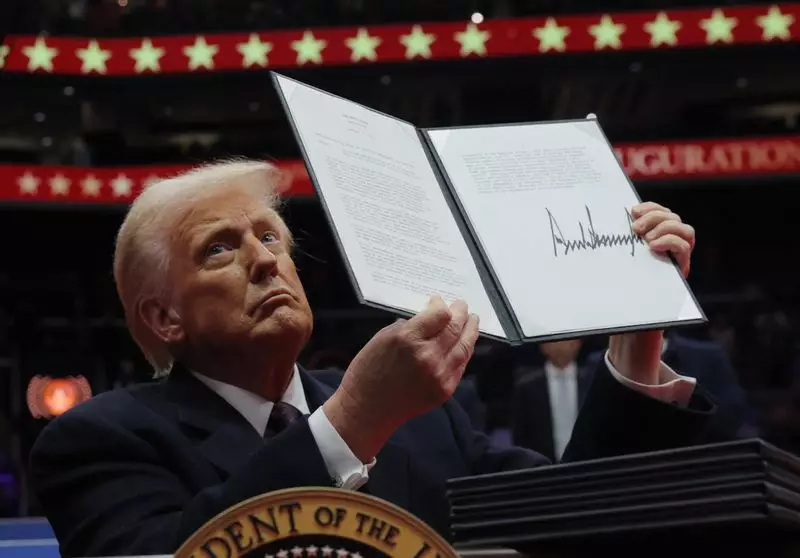In a highly publicized event at Washington’s Capital One Arena, President Donald Trump signed an executive order mandating that federal employees return to the office five days a week. This directive marks a significant shift away from the remote work arrangements that gained popularity during the COVID-19 pandemic. The decision has sparked controversy, as it not only affects the work-life balance of numerous white-collar workers but also throws into question the broader implications for the future of civil service in America.
By pushing federal employees to abandon remote work, Trump’s administration appears to be targeting a legacy of civil service norms that have provided stability and continuity in government operations. Critics argue that this forced return might aim to facilitate a broader agenda — one that involves replacing long-standing civil servants with individuals who are more aligned with Trump’s ideology. This can be seen as part of a strategic maneuver to consolidate power within federal agencies by ensuring that the workforce is compliant and loyal.
The executive order states that department heads are to take immediate steps to terminate any remote working arrangements. Although exceptions can be made at the discretion of agency leaders, the tone of necessity emphasized in the directive leaves little room for flexibility, potentially putting employees in precarious positions where their job security might be in jeopardy if they refuse to comply.
Hiring Freeze and Its Consequences
Coinciding with this mandate is a hiring freeze paired with the establishment of a new advisory body, the Department of Government Efficiency. This move signals a concerted effort to pare down the workforce and potentially eliminate certain federal agencies altogether. Such drastic transformations could lead to reduced morale among government employees, increasing anxiety about job stability and diminishing the incentive for qualified individuals to pursue careers in public service.
Economists and human resource experts suggest that these tactics could drive many frustrated federal employees out of their roles, prompting a ‘brain drain’ that would ultimately harm the effectiveness of government operations. A talented workforce is critical in executing policies and serving citizens, and undermining that workforce could yield long-term detriments to federal governance.
Public reaction to Trump’s executive order has been mixed. Supporters view the move as a necessary correction to a workforce perceived as sluggish and underperforming. Detractors, however, highlight the risks of undermining the very foundations of a professional civil service that remains objectives-driven rather than politically motivated. The decision may bolster short-term strategy but could weaken essential governance structures in the long run.
Moreover, as organizations grapple with the challenges posed by this new directive, the questions surrounding workplace flexibility might take center stage in future policy discussions. With the growing emphasis on employee well-being and a supportive work culture, the executive order may represent an outdated approach in a rapidly evolving employment landscape where remote work can enhance productivity and job satisfaction.
Trump’s executive order to revert federal employees to full-time in-person work reflects a pivotal moment not only in U.S. labor policy but also in the political dynamics within government structures. The potential consequences of this decision will undoubtedly unfold over the coming months and years, raising significant questions about the future of federal employment in America.

